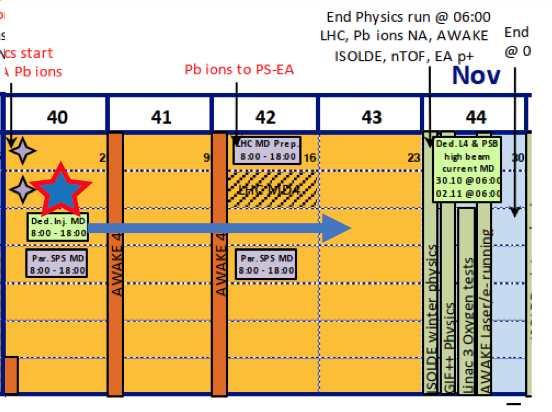
The agenda for this meeting is based upon user schedule 2.1.0, please cf. here. Please note the current injector schedule which contains information about MDs, Technical stops, etc. and can be found here.
Next user meeting:
For week 41 on Thursday October 12th, 2023 10:30 CEST
Meeting room: 874/1-011 (CERN)
Previous EATM meeting from September 26th 2023:
indico.cern.ch/event/1329739/
Check the Page 1 on the machine vistars for most up-to-date information of the beam availability:
https://op-webtools.web.cern.ch/vistar/vistars.php?usr=SPS1
https://op-webtools.web.cern.ch/vistar/vistars.php?usr=CPS
Now, during the LHC ion commissioning period more last-minute changes can happen than usually during the run.
During the rest of the run: Dedicated LHC filling with ions trains in the SPS. The fillings might last around 1 hour and repeat about every 5 hours.
Injector Schedule

Please note that during this periode the MDs migth change on short notice if problems occure in the SPS/LHC.
Dedicated MD (8-18h) moved to week 43. Can happen between Monday and Wednesday. LHC driven. Not later than Wednesday. Date to be confirmed.
Wk 40: Long parallel MD (8h-18h) on Thursday.
Short MDs on Monday and Tuesday.
Wk 41 : No long parallel MD
Wk 42 : Long parallel MDs (8h-18h) scheduled for Thursday. Investigating if this can be combined with Monday LHC MD. TBC.
Dedicated Linac4 and PSB high intensity in week 44
Physics programme according to planning:
Proton beam average intensity excellent. 10e10 ppb variant on some EAST cycles since yesterday afternoon for diamond detector.

East area overall: Issue with hall interior lighting due to unannounced maintenance works.
T09: For OREO, the same configuration as for Techno CLS is going to be used. Wednesday evening the proton beam was found to be off by almost 3 cm on the T9 target in the vertical plane, leading to very low beam rate in T9. The autosteering was unable to steer the beam back due to the large offset. After manual steering, the situation got better. It is not clear what caused this big jump.
T10: Good operation.
T11: No issues. Reminder that if the T10/T11 target is requested to be changed, please contact both Laurie and Maarten to discuss first as this will impact CLOUD.
Good week, issue with IRRAD-BPM signals solved on Thursday 28/9 morning (faulty LEMO connector). Weekly intensity level close to the target value (~1.9e16 p/w, see plot below). Beam alignment and center on both X- and Y-axis was very good (e.g. number of spills centered within +/- 2mm): >97%.
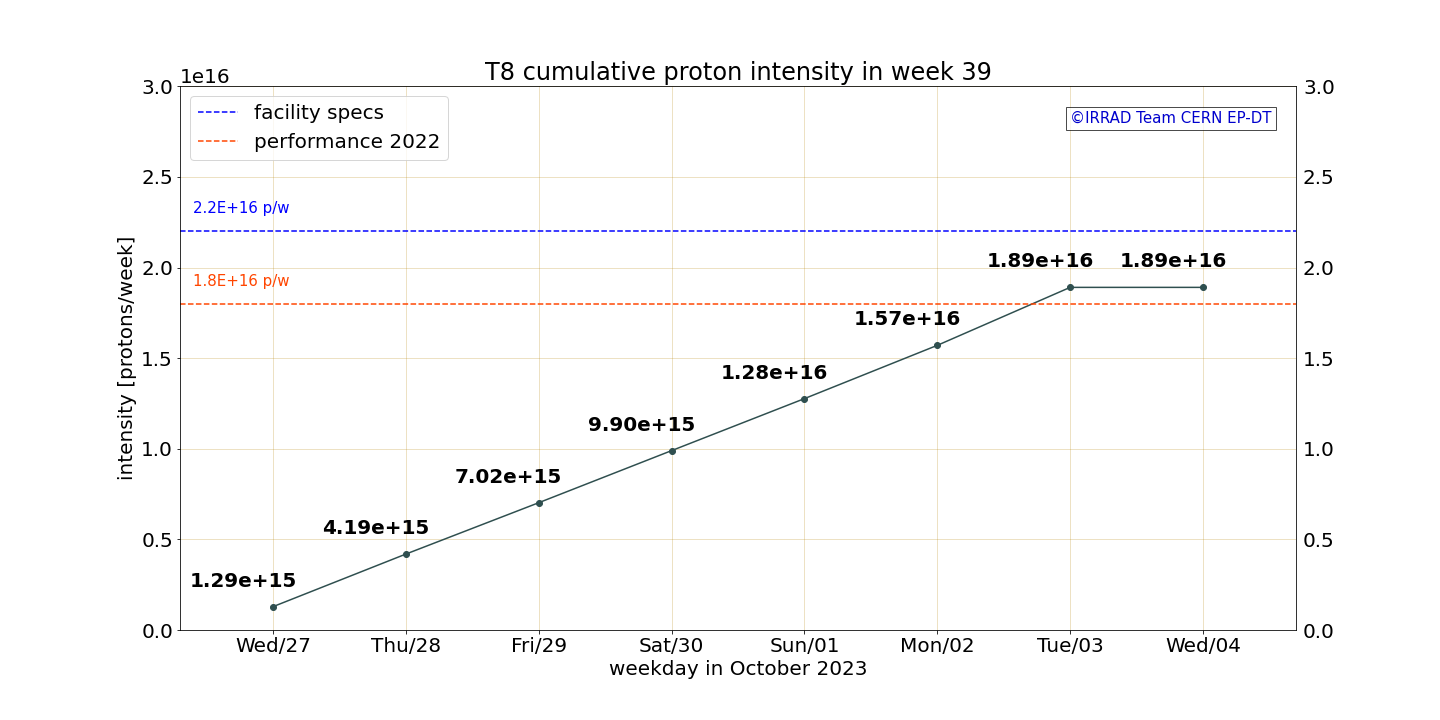
During the access on Wednesday, in IRRAD we exchanged the dosimetry and completed “short” LHCb/EP-DT (optical fibers, calorimerty cristal samples, mirror samples, etc.) and ATLAS (heat-shirking tube) experiments. The cryostat and long-term experiments in Zone 3 continue. In CHARM, we removed TE/MPE (WIC) and BE/CEM/EDL setups, installed TE/MPE (QPS) and TE/EPC (power converter) setups, the last users for the main irradiation rack 2023.
Waiting green-light to test the high-intensity EAST_T8 spills (80E10 pps extracted) during the last two weeks of the proton run. Clarifications about the max intensity possible to deliver to EAST destination is ongoing.
The first Wednesday of the ion period (18/10) there will be the need to access EA1 (in the morning on the shadow of the EA2 access) to install a measurement device on the last beam-stopper and we would require other two short access slots (~40min ventilation time included) during the afternoon. Is this compatible with the user run in the other test-beam lines ?
We started warming up system on 03 October afternoon. All equipment was move from experimental zone 04.10 morning. During test calorimeter was scanned with electrons in energy range 0.25-10 GeV. Energy resolution curves and time resolution were measured for 3 different photodetectors. We have got time resolution ~180 ps at 1 GeV deposited in crystal energy. Prototype of 32 channels front-end card was tested successfully. Grate thank you to East-Area team for help during installation and deinstallation and Dipanwita for clear explanations and help with beam tuning.
.
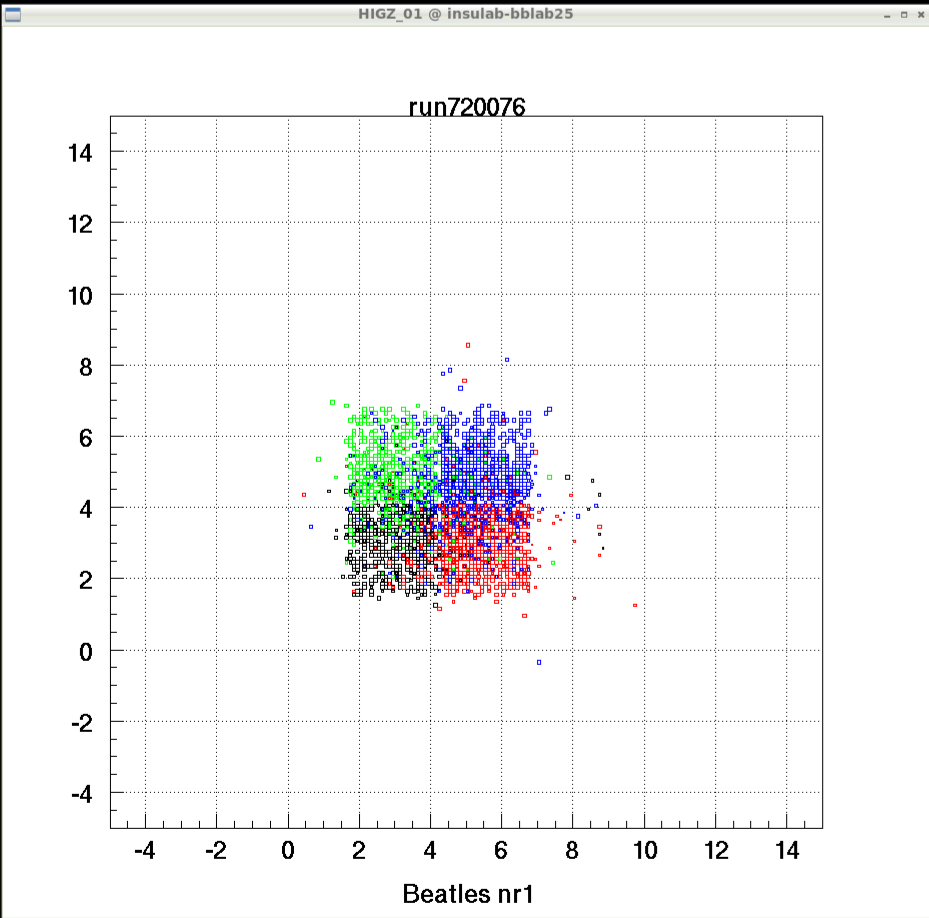
Please refer to the uploaded slides in the agenda.
Measurement completed, excellent beam conditions
Nothing special to report
Set-up completed on afternoon on Oct 4, and data taking started in the evening.
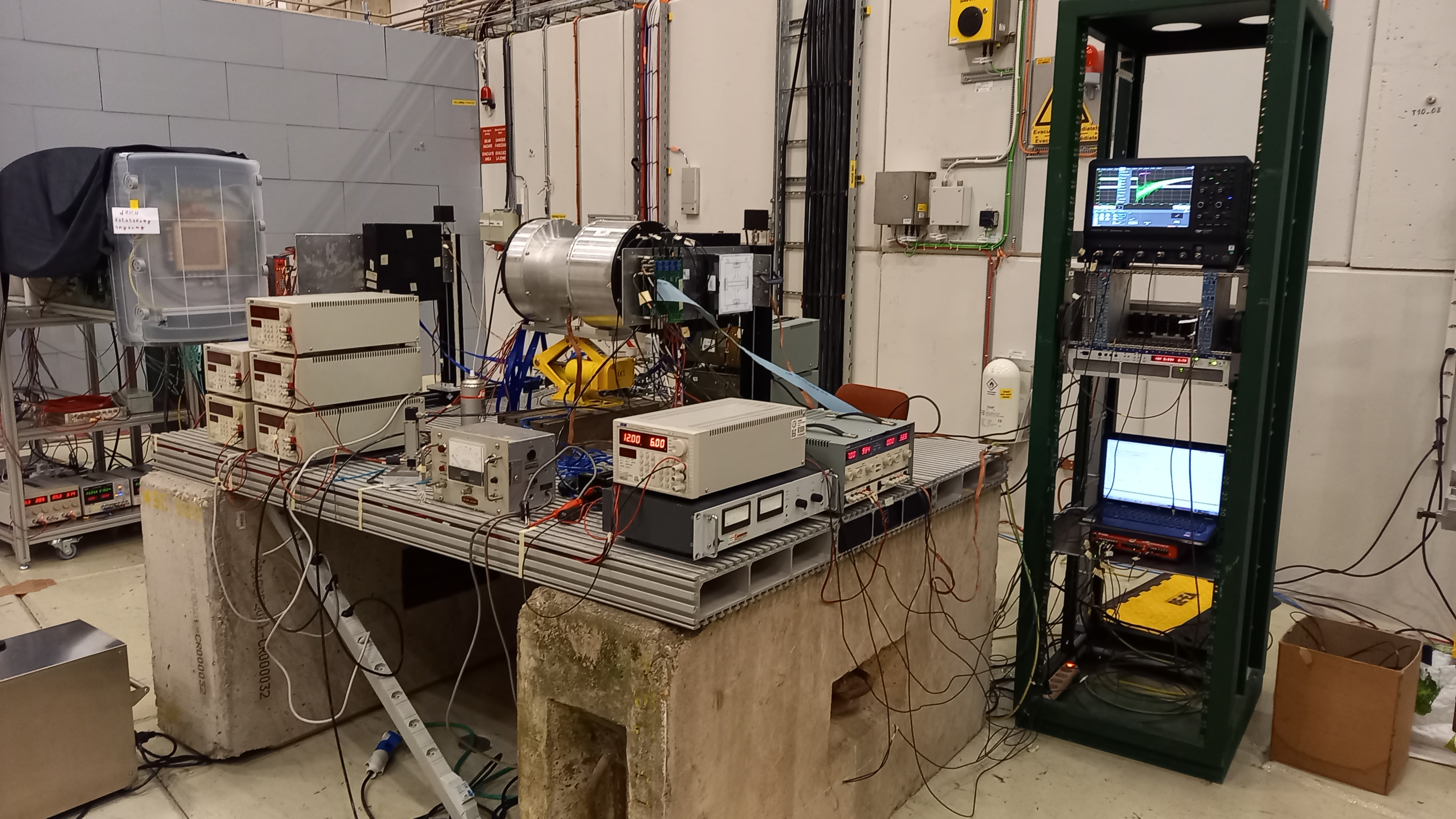
CLOUD is running smoothly. Some minor hickups with the gas system but going well overall.
(Uploaded after the meeting)
Preparing for beam on Sunday. Tight schedule due to installation delays, but we should make it.
H2: Smooth operation. Ion comissioning started on Thursday, beam ready for checks already from Friday.
H4: Smooth operation, ion comissioning completed on Friday.
H6: End of proton beam operation. Beamline off.
H8: Smooth operation, ion commissioning completed on Sunday. An additional target (200mm polyethylene) was installed as a secondary target in the XCON.042.130, to possibly provide more efficient ion fragmentation.
M2: End of proton beam operation, beamline off.
P42/K12: End of proton beam operation, beamlines off.
Finished activities for 2023.
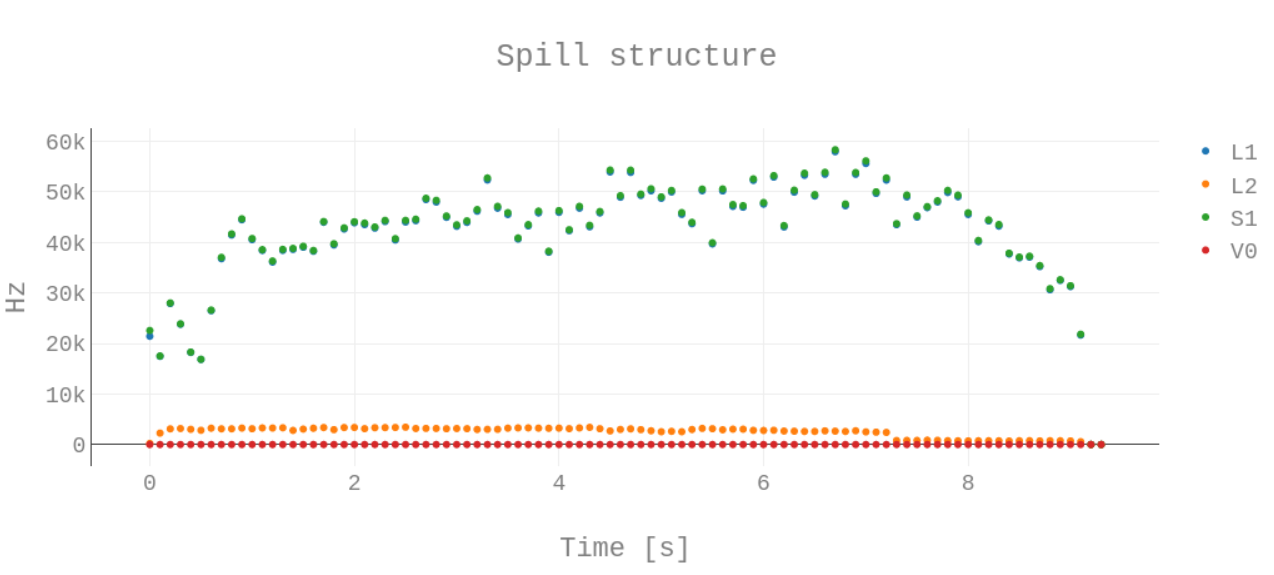
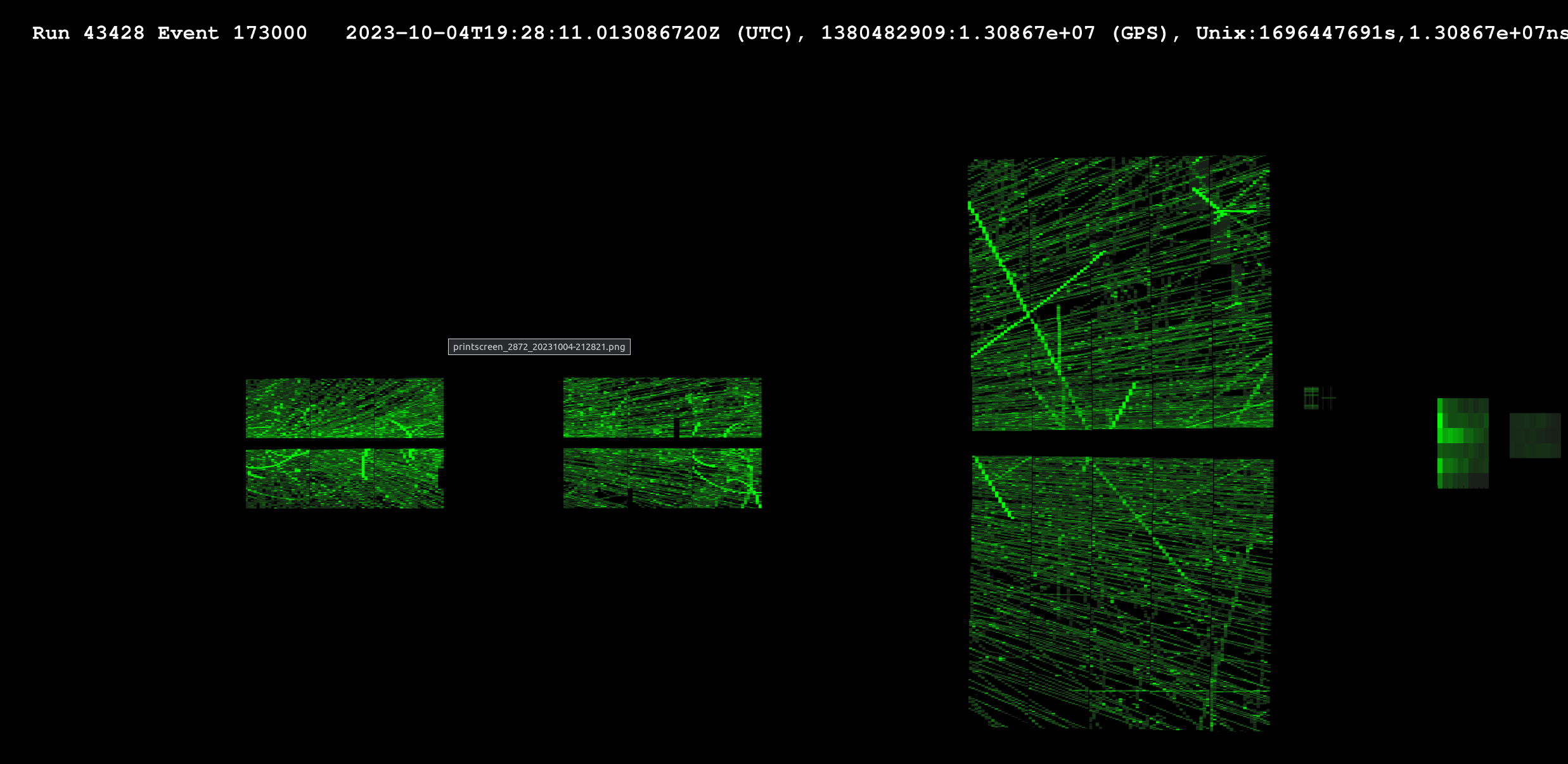
We finished debugging our setup and took yesterday the synchronus runs with all subdetectors. The beam is a bit too wide in vertical dimension (> 5 cm long) and too narrow in horizontal (~4-6 mm). A deeper charge distribution study is needed.
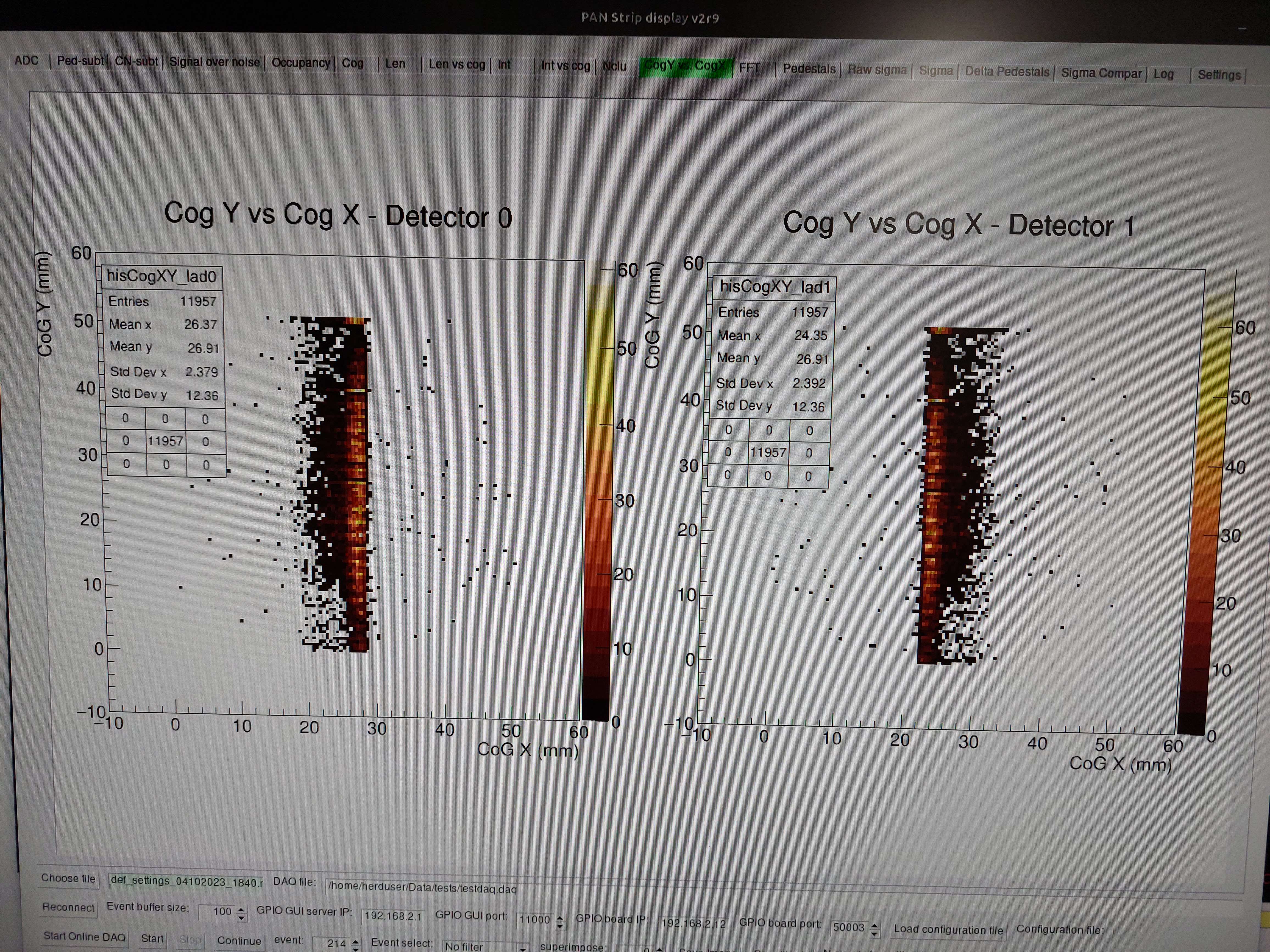
Ion beam profiles recorded by PAN silicon strip detectors (single cluster cut set in every detector).
Some of the equipment was already installed in previous weeks. We installed the remaining subdetectors on Monday October 3. No particular issues to report and thanks to Laura for security support!
Setup: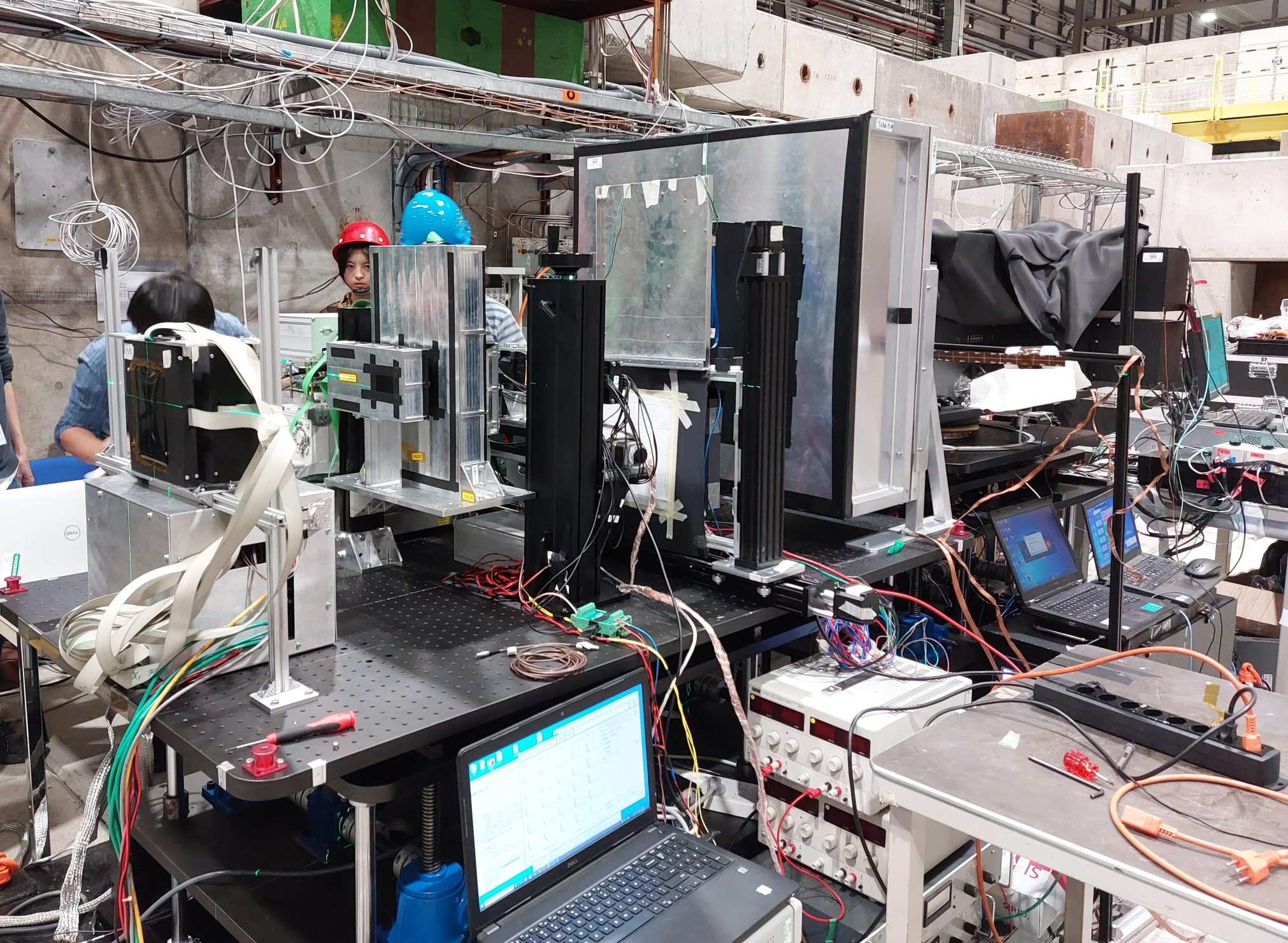
Beam was good, Nikos prepared three files (320 GeV/Z, 330 GeV/Z, 340 GeV/Z) and helped us reducing the intensity on the 330 GeV/Z beam, thanks! Our plan is to study response of the HERD subdetectors to high Z particles and measure charge resolution.
This is the beam composition detected by a scintillator tile with a trigger threshold of about Z=2.5. However, we see a large halo, we are investigating and ask Nikos for help if we need.
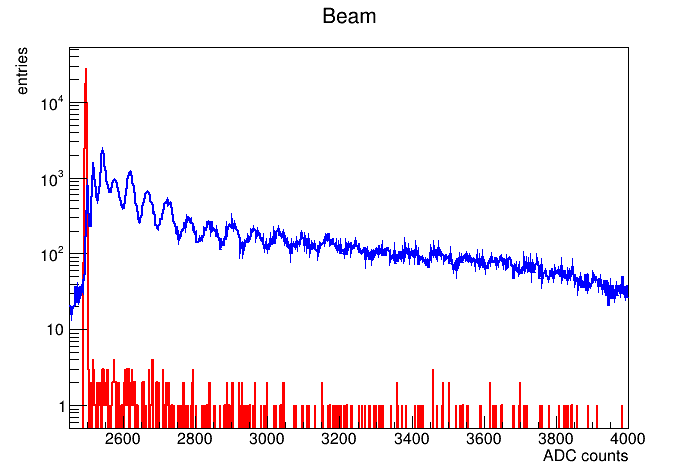
When PAN moves out next week, we will need an extension of the beam pipe. We will get in touch with Michael Lazzaroni.
We are in touch with Michael for a storage area of our equipment at the end of the beam test
Finished activities for 2023.
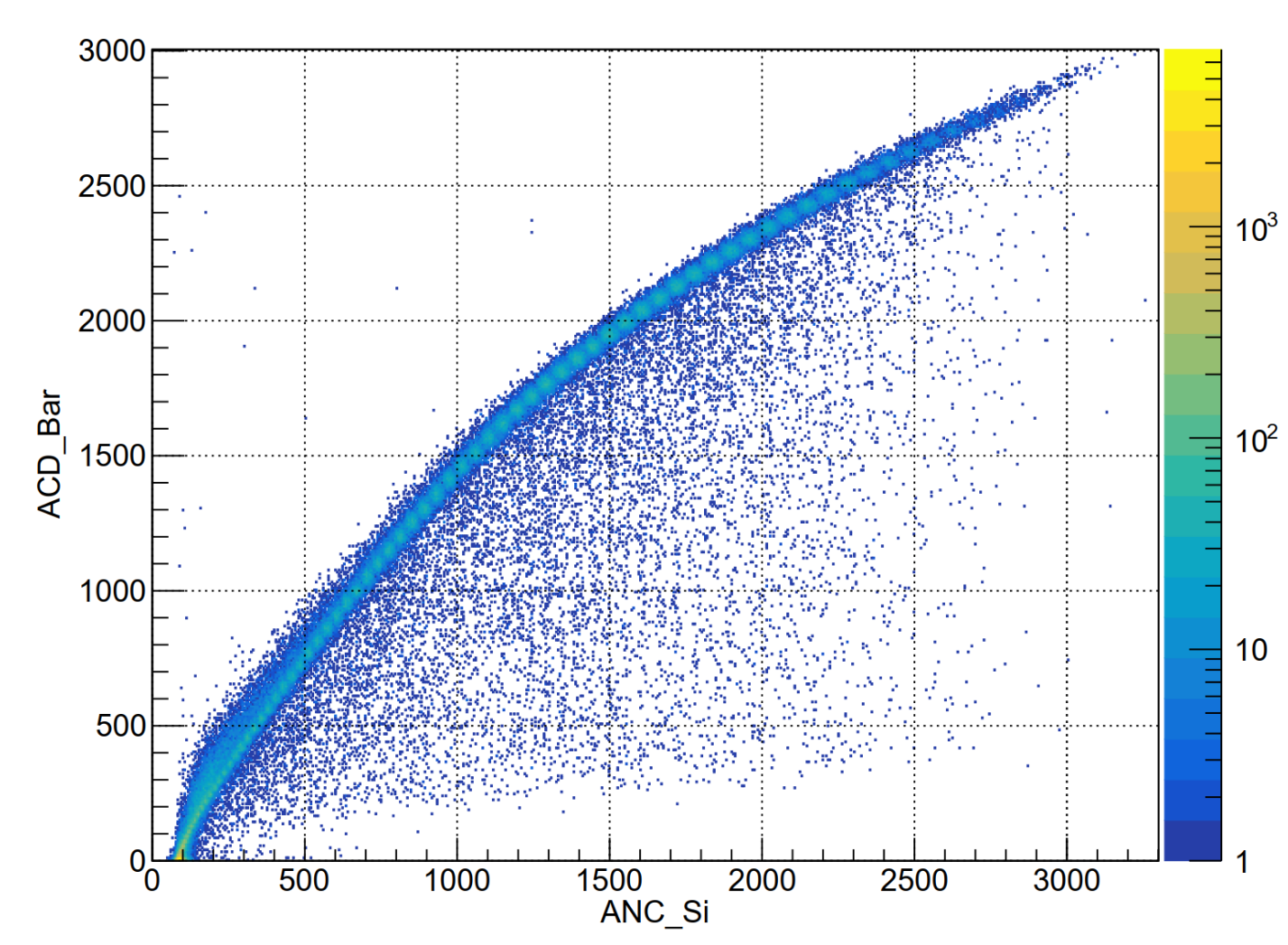
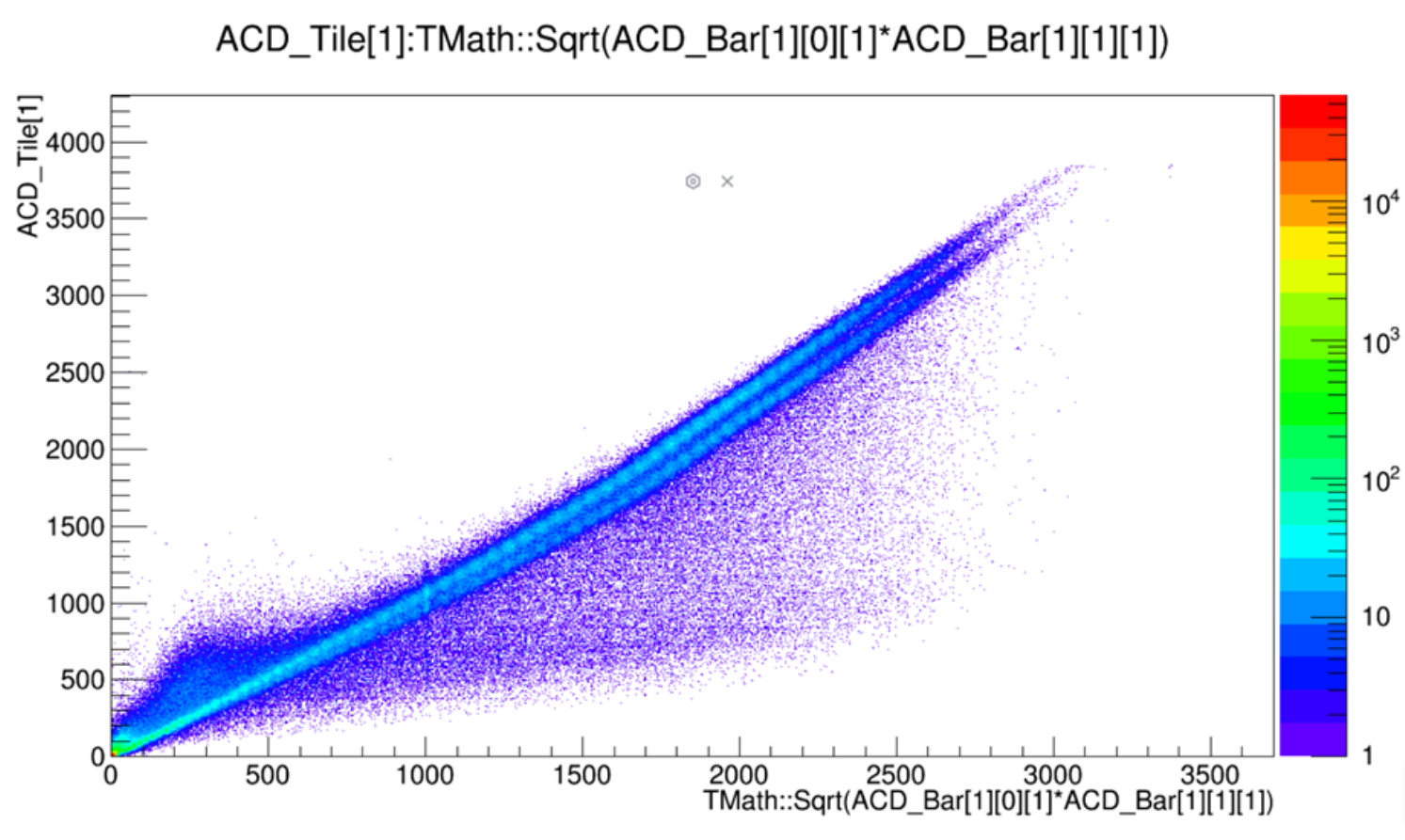
-104
The data taken for a Diamonds detector package was finished and yesterday was dismounted and feed on eslot in the Roman Pot station.
The plan is for the next week to install one Silicon Pixel detector packages for test in the Roman Pot station.
Therefore we need to know what is the status for access to PPE168 during next week. The plan is to have some long access for installation and for the tets so if the area can be in free access will be great.
See above. Nothing else to report.
Minutes by the respective speakers, edited by E. B. Holzer, M. Jaekel, and M. Schwinzerl